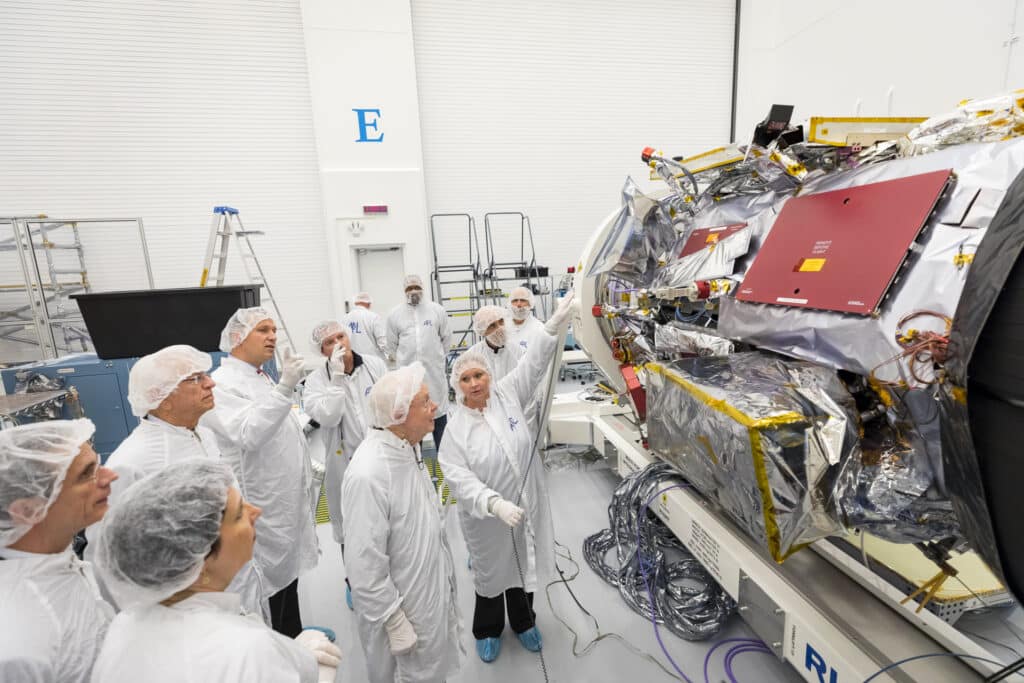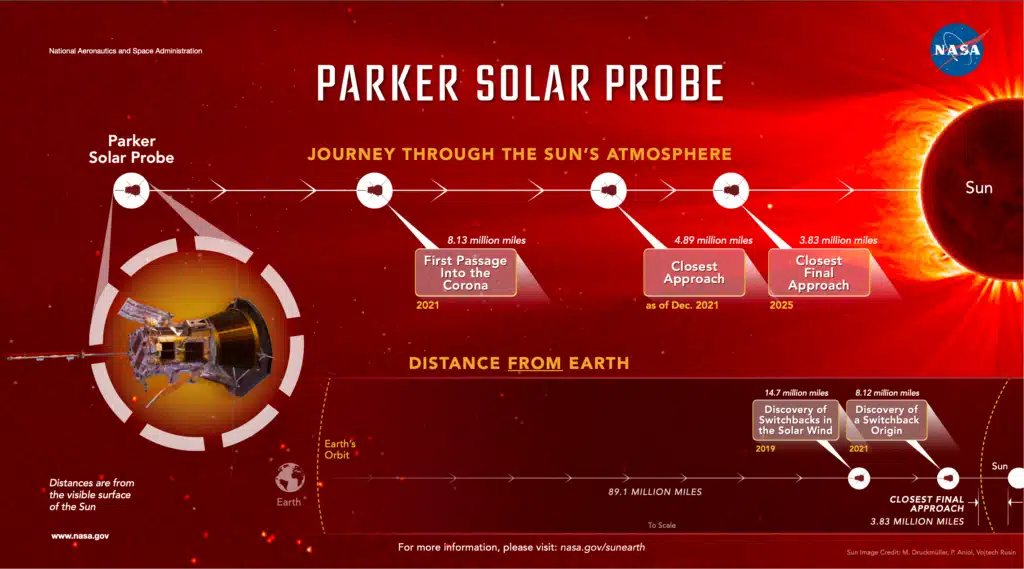NASA’s fastest man-made object hits speeds 500 times the speed of sound
- The Parker Solar Probe is the fastest man-made object in the world
- It has been recorded traveling at a staggering 635,266km/hour – around 500 times the speed of sound
- The probe will fly closer to the sun than any other spacecraft
Published on Jul 18, 2024 at 2:19 AM (UTC+4)
by Claire Reid
Last updated on Jul 18, 2024 at 6:33 PM (UTC+4)
Edited by
Tom Wood
A NASA spacecraft has been recorded hurtling through space at almost 400,000mph as it makes its way towards the sun.
The Parker Solar Probe blasted off in 2018 on a mission to ‘revolutionize’ our understanding of the sun.
It is gradually making its way closer and closer to the sun, where it will gather measurements and images that researchers will use to deepen their knowledge of solar wind.
READ MORE! NASA spacecraft to ‘touch’ the sun at staggering speed in 2024
The NASA space probe has made history

The Parker Solar Probe made history in 2021 when it became the first spacecraft to fly through the corona – the sun’s upper atmosphere – and it captured unprecedented first views of Venus’ surface from space.
It also set a record for the fastest man-made object in the world in 2023 after it hit a staggering 635,266km per hour (394,736mph).
On June 29, it matched that speed.
“Parker Solar Probe just made its 20th close approach to the sun, moving at a whopping 394,736 miles per hour and passing about 4.51 million miles (7.26 million km) from our star,” NASA wrote on X.
For some context, that’s around 500 times the speed of sound.
It’s set to get even faster

At its launch back in 2018, the US space agency said Parker ‘will reach speeds up to 430,000 miles per hour (692,017km/h) — fast enough to get from Philadelphia to Washington, D.C. in a second.
As Parker flies closer to the sun than any other spacecraft, it has been designed to withstand extreme conditions using cutting-edge thermal engineering advances.
The Parker Solar Probe and its instruments are protected from the sun’s heat by an 11.43cm-thick (4.5-inch-thick) carbon-composite shield, which is able to withstand temperatures reaching nearly 1,377 Celsius (2,500F)
“NASA was planning to send a mission to the solar corona for decades, however, we did not have the technology that could protect a spacecraft and its instruments from the heat,” said Adam Szabo, the mission scientist for Parker Solar Probe at NASA’s Goddard Space Flight Center.
“Recent advances in materials science gave us the material to fashion a heat shield in front of the spacecraft not only to withstand the extreme heat of the sun, but to remain cool on the backside.”
DISCOVER SBX CARS: The global premium car auction platform powered by Supercar Blondie
Claire Reid is a journalist who hails from the UK but is now living in New Zealand. She began her career after graduating with a degree in Journalism from Liverpool John Moore’s University and has more than a decade of experience, writing for both local newspapers and national news sites. Claire covers a wide variety of topics, with a special focus on cars, technology, planes, cryptocurrency, and luxury.




